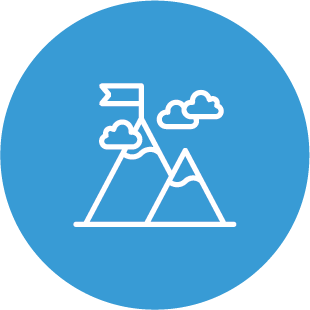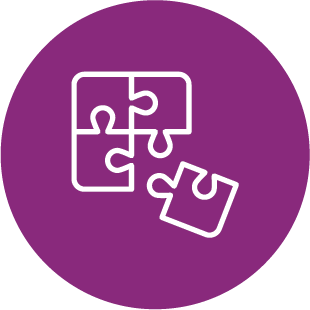Case Study
Expanding and Accelerating Research at University of Texas Medical Branch (UTMB) Blocker Burn Unit with TriNetX

Customer
The University of Texas Medical Branch (UTMB) Health’s Blocker Burn Center in Galveston, Texas

Challenge
Conducting research on a large group of patients with some degree of granularity could pose a challenge, particularly while navigating the institutional review board process

Solution
The TriNetX Research Network provides UTMB access to millions of de-identified patients, simplifying and accelerating the research process by expanding their access to data by thousands of patients, with greater longitudinal data than they had seen before

Results
The UTMB Burn Blocker Unit has increased insight on a number of burn-related issues, including rare conditions related to burns. Researchers uncovered findings related to variability of mortality rates and treatment paths for these patients. Additionally, UTMB has strengthened their research program, with a number of studies already in progress using TriNetX data
University of Texas Medical Branch (UTMB) Blocker Burn Unit
The University of Texas Medical Branch (UTMB) Health’s Blocker Burn Center in Galveston, Texas is nationally and internationally recognized for specialization in the treatment of thermal, chemical and radiation burns, as well as research related to burns, trauma, sepsis and tissue repair.
In 1996, UTMB Health’s Blocker Burn Center became the first burn center in the U.S. to be certified by both the American College of Surgeons and the American Burn Association, an accreditation it has maintained continuously since then, in addition to having the highest survival rate of patients with major burn injury (greater than 80 percent) of all hospitals in the U.S.
“I take care of patients every day and I’m the inquisitive sort,” said Dr. Steven E. Wolf, Division Chief of Burn, Trauma, and Acute Care Surgery in the Department of Surgery. “I’m constantly wondering what is true or not true, and what does the data and evidence support, especially regarding burns. There are always questions that need to be answered through research. TriNetX has been instrumental in helping us answer these questions in a reasonable amount of time.”
Accelerating the research process with TriNetX
Dr. Wolf became aware of the TriNetX Research network during a think tank conference in which he was participating. One of the breakout groups focused on the application of technology to research methods.

One of the other participants brought up that UTMB had just brought in TriNetX and started talking about its capabilities,” said Dr. Wolf. “Immediately my ears perked up. I quickly realized I could use this type of platform to access data on millions of patients with a reasonable degree of granularity and wouldn’t have to fight through an institutional review board to get it because the data is all de-identified. I knew then it would be a godsend.”
Dr. Wolf began conducting research in the area of burns, with an eye toward expanding into acute care surgery and trauma.
“We started with burns because it’s a relatively confined field,” said Dr. Wolf. “Most of the burn patient databases have about 10,000 to 15,000 patients. I was absolutely amazed to find that the TriNetX platform has data from nearly 200,000 burn patients with better granularity than any of the other datasets we could use.”
Research findings expanding burns-medicine knowledge base
Using the TriNetX platform has increased the unit’s knowledge of several burn- related issues. One in particular is the cause and treatment of toxic epidermal necrolysis (TEN), a rare and serious condition where the skin begins to fall off those suffering from it. Often, the condition is caused by an adverse reaction to medications like anticonvulsants or antibiotics. People suffering from the condition usually end up in the burns unit because that is where they can get the most effective care.
“Most burn centers will treat 10 or 15 of these patients a year so the biggest database is in the hundreds,” said Dr. Wolf. “TriNetX has data from thousands of these patients.”
Using the TriNetX platform, Dr. Wolf and his team conducted analysis that was able to determine actual mortality rates and get a better understanding of the causes of the disease.
“We’ve come across a few surprising findings from this expanded research,” said Dr. Wolf. “It was always thought that the condition was caused by one to three drugs. Our research found it can be caused by 50 different drugs.”
The longitudinal nature of the data in the TriNetX platform allowed Dr. Wolf and his team to uncover significant information surrounding not only the mortality rate, but the variability of that rate.
“The common understanding was that with 50 percent burns, the mortality rate was 40 percent,” said Dr. Wolf. “But the databases were never large enough to fully attribute any variability to that number. With TriNetX, we had enough data to actually determine the variability in mortality rates. The critical data point is not the mortality rate itself, but the variability of the rate.”
Their research found the variability of the rates could be anywhere from 20 percent to 100 percent.

That difference is crucial when it comes to determining treatment,” said Dr. Wolf. “It can have a huge difference in whether someone continues treatment or is relegated to palliative care. Once you understand the variability, you can see that we may be withdrawing care from people who would otherwise have lived. It’s a crucial discovery in making potentially life or death treatment decisions.”
Using TriNetX to accelerate research
Dr. Wolf and his team have found that conducting research is much faster using the TriNetX platform.
“Using TriNetX, the analysis is almost done,” said Dr. Wolf. “Traditionally the real struggle in research has been gathering the data. Now the data is already gathered so we are able to spend more time thinking about the questions to analyze because the analysis itself is extremely fast. Was the analysis set up properly? Do the terms used best support answering the medical or biological question you’re asking?”
Dr. Wolf and his team now have 18 studies in progress using TriNetX, most of them from a group of students who gather during the summer for extracurricular work.

Part of my responsibility is to teach these students how to write papers,” said Dr. Wolf. “We generally have between 10 and 15 medical students who do two months of research with us. The TriNetX platform sets up perfectly for them because they don’t need an extensive amount of training. They are incented to publish a paper for their CV and the TriNetX platform has enabled us to help them reach that goal.”
Setting up a burns research group using TriNetX
Dr. Wolf is working with colleagues around the country to set up a special burns group leveraging the data in the TriNetX platform.
“I envision meeting once a month with colleagues and leaders in the field of burn treatment and talking about projects we can get done using TriNetX,” said Dr. Wolf. “The opportunity costs to do a study are just so low because of the efficiency of the platform. We plan on developing questions, doing the research, and getting to the truth using this giant database.”
“The TriNetX platform is brilliant,” Dr. Wolf summed up. “Instead of spending days digging through medical records to come up with the right question to ask, I can do the same thing in a fraction of the time with TriNetX. I absolutely love the platform and what it can do for us.”
About UTMB Blocker Burn Unit
UTMB Health’s Blocker Burn Center is nationally and internationally recognized for specialization in the treatment of thermal, chemical and radiation burns, as well as research related to burns, trauma, sepsis and tissue repair. The renovated Blocker Burn Unit has roughly doubled in size — with two more dedicated beds, bringing the total to six — and now comfortably accommodates both inpatient and outpatient care in a soothing environment that incorporates the best in design. Treatment for burn patients requires a team approach with as many as four care providers at the bedside simultaneously. The rooms have nearly doubled in size, allowing that care to flow freely and providing extra space for family to stay in the room. For more information, visit https://www.utmbhealth.com/services/blocker-burnunit/about
About TriNetX
TriNetX is the global health research network that connects the world of drug discovery and development from pharmaceutical company to study site, and investigator to patient by sharing real-world data to make clinical and observational research easier and more efficient. TriNetX combines real time access to longitudinal clinical data with state-of-the-art analytics to optimize protocol design and feasibility, site selection, patient recruitment, and enable discoveries through the generation of real-world evidence. The TriNetX platform is HIPAA and GDPR compliant. For more information, visit TriNetX at www.trinetx.com or follow @TriNetX on Twitter.

